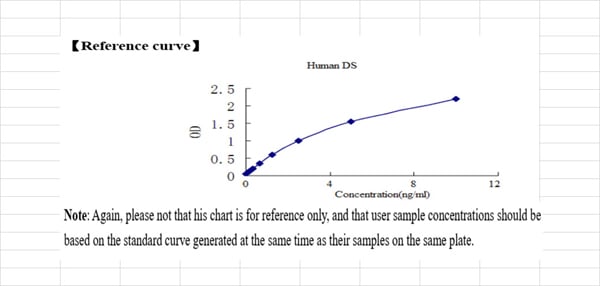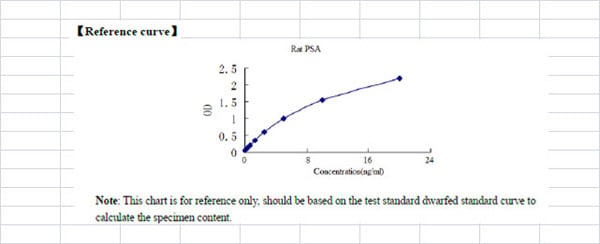| GET |
/ |
\App\Controllers\Home::index |
| GET |
admin |
\App\Controllers\Admin::index |
| GET |
admin/customers |
\App\Controllers\Admin::customers |
| GET |
admin/orders |
\App\Controllers\Admin::orders |
| GET |
admin/users |
\App\Controllers\Admin::users |
| GET |
contact |
\App\Controllers\Page::render/contact/Contact Us |
| GET |
privacy |
\App\Controllers\Page::render/privacy/Privacy Policy |
| GET |
terms |
\App\Controllers\Page::render/terms/Terms and Conditions |
| GET |
ordering-faqs |
\App\Controllers\Page::render/ordering_faqs/Ordering FAQs |
| GET |
order-form |
\App\Controllers\Page::render/order_form/Order Form |
| GET |
elisa-kits |
\App\Controllers\Page::render/elisa_kits/ELISA Kits |
| GET |
account |
\App\Controllers\Account::index |
| GET |
orders |
\App\Controllers\Account::orders |
| GET |
order/([0-9]+) |
\App\Controllers\Account::order/$1 |
| GET |
monoclonal-antibodies |
\App\Controllers\Product::render/clonality=where=Monoclonal/Monoclonal Antibodies |
| GET |
polyclonal-antibodies |
\App\Controllers\Product::render/clonality=where=Polyclonal/Polyclonal Antibodies |
| GET |
phospho-antibodies |
\App\Controllers\Product::render/products_name_oem=like=phospho/Phospho Antibodies |
| GET |
secondary-antibodies |
\App\Controllers\Product::render/products_image=where=Secondary Antibody/Secondary Antibodies |
| GET |
pcr-kit |
\App\Controllers\Product::render/products_image=like=PCR/PCR Kit |
| GET |
clia-kit |
\App\Controllers\Product::render/products_image=like=CLIA/CLIA Kit |
| GET |
recombinant-proteins |
\App\Controllers\Product::render/products_image=where=Recombinant Protein/Recombinant Proteins |
| GET |
recombinant-antibodies |
\App\Controllers\Product::render/products_image=where=Recombinant Protein/Recombinant Antibodies |
| GET |
active-proteins |
\App\Controllers\Product::render/products_image=where=Active Protein/Active Proteins |
| GET |
peptide |
\App\Controllers\Product::render/products_image=where=Peptide/Peptide |
| GET |
sirna |
\App\Controllers\Product::render/products_image=like=siRNA/siRNA |
| GET |
all-products |
\App\Controllers\Product::render/all/All Products |
| GET |
compare |
\App\Controllers\Datasheet::compare |
| GET |
bovine-elisa-kits |
\App\Controllers\Product::render/products_image=like=ELISA|reactivity=like=bovine/Bovine ELISA Kits (Cow, Cattle) |
| GET |
avian-elisa-kits |
\App\Controllers\Product::render/products_image=like=ELISA|reactivity=like=avian/Avian ELISA Kits |
| GET |
camel-elisa-kits |
\App\Controllers\Product::render/products_image=like=ELISA|reactivity=like=camel/Camel ELISA Kits |
| GET |
canine-elisa-kits |
\App\Controllers\Product::render/products_image=like=ELISA|reactivity=like=canine/Canine ELISA Kits |
| GET |
chicken-elisa-kits |
\App\Controllers\Product::render/products_image=like=ELISA|reactivity=like=chicken/Chicken ELISA Kits |
| GET |
donkey-elisa-kits |
\App\Controllers\Product::render/products_image=like=ELISA|reactivity=like=donkey/Donkey ELISA Kits |
| GET |
duck-elisa-kits |
\App\Controllers\Product::render/products_image=like=ELISA|reactivity=like=duck/Duck ELISA Kits |
| GET |
equine-elisa-kits |
\App\Controllers\Product::render/products_image=like=ELISA|reactivity=like=equine/Equine ELISA Kits |
| GET |
feline-elisa-kits |
\App\Controllers\Product::render/products_image=like=ELISA|reactivity=like=feline/Feline ELISA Kits |
| GET |
fish-elisa-kits |
\App\Controllers\Product::render/products_image=like=ELISA|reactivity=like=fish/Fish ELISA Kits |
| GET |
goat-elisa-kits |
\App\Controllers\Product::render/products_image=like=ELISA|reactivity=like=goat/Goat ELISA Kits |
| GET |
goose-elisa-kits |
\App\Controllers\Product::render/products_image=like=ELISA|reactivity=like=goose/Goose ELISA Kits |
| GET |
guinea-pig-elisa-kits |
\App\Controllers\Product::render/products_image=like=ELISA|reactivity=like=guinea-pig/Guinea Pig ELISA Kits |
| GET |
hamster-elisa-kits |
\App\Controllers\Product::render/products_image=like=ELISA|reactivity=like=hamster/Hamster ELISA Kits |
| GET |
human-elisa-kits |
\App\Controllers\Product::render/products_image=like=ELISA|reactivity=like=human/Human ELISA Kits |
| GET |
monkey-elisa-kits |
\App\Controllers\Product::render/products_image=like=ELISA|reactivity=like=monkey/Monkey ELISA Kits |
| GET |
mouse-elisa-kits |
\App\Controllers\Product::render/products_image=like=ELISA|reactivity=like=mouse/Mouse ELISA Kits |
| GET |
pigeon-elisa-kits |
\App\Controllers\Product::render/products_image=like=ELISA|reactivity=like=pigeon/Pigeon ELISA Kits |
| GET |
plant-elisa-kits |
\App\Controllers\Product::render/products_image=like=ELISA|reactivity=like=plant/Plant ELISA Kits |
| GET |
porcine-elisa-kits |
\App\Controllers\Product::render/products_image=like=ELISA|reactivity=like=porcine/Porcine ELISA Kits |
| GET |
primate-elisa-kits |
\App\Controllers\Product::render/products_image=like=ELISA|reactivity=like=primate/Primate ELISA Kits |
| GET |
rabbit-elisa-kits |
\App\Controllers\Product::render/products_image=like=ELISA|reactivity=like=rabbit/Rabbit ELISA Kits |
| GET |
rat-elisa-kits |
\App\Controllers\Product::render/products_image=like=ELISA|reactivity=like=rat/Rat ELISA Kits |
| GET |
sheep-elisa-kits |
\App\Controllers\Product::render/products_image=like=ELISA|reactivity=like=sheep/Sheep ELISA Kits |
| GET |
sitemap-index.xml |
\App\Controllers\Sitemap::unified |
| GET |
sitemaps/([^/]+) |
\App\Controllers\Sitemap::sitemaps/$1 |
| GET |
signin |
\App\Controllers\AuthController::login |
| GET |
signout |
\App\Controllers\AuthController::logout |
| GET |
signup |
\App\Controllers\AuthController::register |
| GET |
activate-account |
\App\Controllers\AuthController::activateAccount |
| GET |
resend-activate-account |
\App\Controllers\AuthController::resendActivateAccount |
| GET |
forgot-password |
\App\Controllers\AuthController::forgotPassword |
| GET |
reset-password |
\App\Controllers\AuthController::resetPassword |
| GET |
logout |
\Myth\Auth\Controllers\AuthController::logout |
| GET |
admin/order/([0-9]+) |
\App\Controllers\Admin::order/$1 |
| GET |
admin/user/([0-9]+) |
\App\Controllers\Admin::user/$1 |
| GET |
[^/]+/[^/]+/[aA]{3}([0-9]+) |
\App\Controllers\Datasheet::render/$1 |
| GET |
[^/]+/[^/]+/([0-9]+) |
\App\Controllers\Datasheet::render/$1 |
| GET |
recombinant-protein.+/([0-9]+) |
\App\Controllers\Datasheet::render/$1 |
| GET |
.+recombinant-protein.+/([0-9]+) |
\App\Controllers\Datasheet::render/$1 |
| GET |
datasheet/([0-9]+) |
\App\Controllers\Datasheet::render/$1 |
| GET |
[aA]{3}([0-9]+) |
\App\Controllers\Datasheet::render/$1 |
| HEAD |
admin/order/([0-9]+) |
\App\Controllers\Admin::order/$1 |
| HEAD |
admin/user/([0-9]+) |
\App\Controllers\Admin::user/$1 |
| HEAD |
[^/]+/[^/]+/[aA]{3}([0-9]+) |
\App\Controllers\Datasheet::render/$1 |
| HEAD |
[^/]+/[^/]+/([0-9]+) |
\App\Controllers\Datasheet::render/$1 |
| HEAD |
recombinant-protein.+/([0-9]+) |
\App\Controllers\Datasheet::render/$1 |
| HEAD |
.+recombinant-protein.+/([0-9]+) |
\App\Controllers\Datasheet::render/$1 |
| HEAD |
datasheet/([0-9]+) |
\App\Controllers\Datasheet::render/$1 |
| HEAD |
[aA]{3}([0-9]+) |
\App\Controllers\Datasheet::render/$1 |
| POST |
signin |
\App\Controllers\AuthController::attemptLogin |
| POST |
signup |
\App\Controllers\AuthController::attemptRegister |
| POST |
forgot-password |
\App\Controllers\AuthController::attemptForgot |
| POST |
reset-password |
\App\Controllers\AuthController::attemptReset |
| POST |
login |
\Myth\Auth\Controllers\AuthController::attemptLogin |
| POST |
register |
\Myth\Auth\Controllers\AuthController::attemptRegister |
| POST |
forgot |
\Myth\Auth\Controllers\AuthController::attemptForgot |
| POST |
admin/order/([0-9]+) |
\App\Controllers\Admin::order/$1 |
| POST |
admin/user/([0-9]+) |
\App\Controllers\Admin::user/$1 |
| POST |
[^/]+/[^/]+/[aA]{3}([0-9]+) |
\App\Controllers\Datasheet::render/$1 |
| POST |
[^/]+/[^/]+/([0-9]+) |
\App\Controllers\Datasheet::render/$1 |
| POST |
recombinant-protein.+/([0-9]+) |
\App\Controllers\Datasheet::render/$1 |
| POST |
.+recombinant-protein.+/([0-9]+) |
\App\Controllers\Datasheet::render/$1 |
| POST |
datasheet/([0-9]+) |
\App\Controllers\Datasheet::render/$1 |
| POST |
[aA]{3}([0-9]+) |
\App\Controllers\Datasheet::render/$1 |
| PUT |
admin/order/([0-9]+) |
\App\Controllers\Admin::order/$1 |
| PUT |
admin/user/([0-9]+) |
\App\Controllers\Admin::user/$1 |
| PUT |
[^/]+/[^/]+/[aA]{3}([0-9]+) |
\App\Controllers\Datasheet::render/$1 |
| PUT |
[^/]+/[^/]+/([0-9]+) |
\App\Controllers\Datasheet::render/$1 |
| PUT |
recombinant-protein.+/([0-9]+) |
\App\Controllers\Datasheet::render/$1 |
| PUT |
.+recombinant-protein.+/([0-9]+) |
\App\Controllers\Datasheet::render/$1 |
| PUT |
datasheet/([0-9]+) |
\App\Controllers\Datasheet::render/$1 |
| PUT |
[aA]{3}([0-9]+) |
\App\Controllers\Datasheet::render/$1 |
| DELETE |
admin/order/([0-9]+) |
\App\Controllers\Admin::order/$1 |
| DELETE |
admin/user/([0-9]+) |
\App\Controllers\Admin::user/$1 |
| DELETE |
[^/]+/[^/]+/[aA]{3}([0-9]+) |
\App\Controllers\Datasheet::render/$1 |
| DELETE |
[^/]+/[^/]+/([0-9]+) |
\App\Controllers\Datasheet::render/$1 |
| DELETE |
recombinant-protein.+/([0-9]+) |
\App\Controllers\Datasheet::render/$1 |
| DELETE |
.+recombinant-protein.+/([0-9]+) |
\App\Controllers\Datasheet::render/$1 |
| DELETE |
datasheet/([0-9]+) |
\App\Controllers\Datasheet::render/$1 |
| DELETE |
[aA]{3}([0-9]+) |
\App\Controllers\Datasheet::render/$1 |
| OPTIONS |
admin/order/([0-9]+) |
\App\Controllers\Admin::order/$1 |
| OPTIONS |
admin/user/([0-9]+) |
\App\Controllers\Admin::user/$1 |
| OPTIONS |
[^/]+/[^/]+/[aA]{3}([0-9]+) |
\App\Controllers\Datasheet::render/$1 |
| OPTIONS |
[^/]+/[^/]+/([0-9]+) |
\App\Controllers\Datasheet::render/$1 |
| OPTIONS |
recombinant-protein.+/([0-9]+) |
\App\Controllers\Datasheet::render/$1 |
| OPTIONS |
.+recombinant-protein.+/([0-9]+) |
\App\Controllers\Datasheet::render/$1 |
| OPTIONS |
datasheet/([0-9]+) |
\App\Controllers\Datasheet::render/$1 |
| OPTIONS |
[aA]{3}([0-9]+) |
\App\Controllers\Datasheet::render/$1 |
| TRACE |
admin/order/([0-9]+) |
\App\Controllers\Admin::order/$1 |
| TRACE |
admin/user/([0-9]+) |
\App\Controllers\Admin::user/$1 |
| TRACE |
[^/]+/[^/]+/[aA]{3}([0-9]+) |
\App\Controllers\Datasheet::render/$1 |
| TRACE |
[^/]+/[^/]+/([0-9]+) |
\App\Controllers\Datasheet::render/$1 |
| TRACE |
recombinant-protein.+/([0-9]+) |
\App\Controllers\Datasheet::render/$1 |
| TRACE |
.+recombinant-protein.+/([0-9]+) |
\App\Controllers\Datasheet::render/$1 |
| TRACE |
datasheet/([0-9]+) |
\App\Controllers\Datasheet::render/$1 |
| TRACE |
[aA]{3}([0-9]+) |
\App\Controllers\Datasheet::render/$1 |
| CONNECT |
admin/order/([0-9]+) |
\App\Controllers\Admin::order/$1 |
| CONNECT |
admin/user/([0-9]+) |
\App\Controllers\Admin::user/$1 |
| CONNECT |
[^/]+/[^/]+/[aA]{3}([0-9]+) |
\App\Controllers\Datasheet::render/$1 |
| CONNECT |
[^/]+/[^/]+/([0-9]+) |
\App\Controllers\Datasheet::render/$1 |
| CONNECT |
recombinant-protein.+/([0-9]+) |
\App\Controllers\Datasheet::render/$1 |
| CONNECT |
.+recombinant-protein.+/([0-9]+) |
\App\Controllers\Datasheet::render/$1 |
| CONNECT |
datasheet/([0-9]+) |
\App\Controllers\Datasheet::render/$1 |
| CONNECT |
[aA]{3}([0-9]+) |
\App\Controllers\Datasheet::render/$1 |
| CLI |
migrations/([^/]+)/([^/]+) |
\CodeIgniter\Commands\MigrationsCommand::$1/$2 |
| CLI |
migrations/([^/]+) |
\CodeIgniter\Commands\MigrationsCommand::$1 |
| CLI |
migrations |
\CodeIgniter\Commands\MigrationsCommand::index |
| CLI |
ci(.*) |
\CodeIgniter\CLI\CommandRunner::index/$1 |
| CLI |
admin/order/([0-9]+) |
\App\Controllers\Admin::order/$1 |
| CLI |
admin/user/([0-9]+) |
\App\Controllers\Admin::user/$1 |
| CLI |
[^/]+/[^/]+/[aA]{3}([0-9]+) |
\App\Controllers\Datasheet::render/$1 |
| CLI |
[^/]+/[^/]+/([0-9]+) |
\App\Controllers\Datasheet::render/$1 |
| CLI |
recombinant-protein.+/([0-9]+) |
\App\Controllers\Datasheet::render/$1 |
| CLI |
.+recombinant-protein.+/([0-9]+) |
\App\Controllers\Datasheet::render/$1 |
| CLI |
datasheet/([0-9]+) |
\App\Controllers\Datasheet::render/$1 |
| CLI |
[aA]{3}([0-9]+) |
\App\Controllers\Datasheet::render/$1 |





















